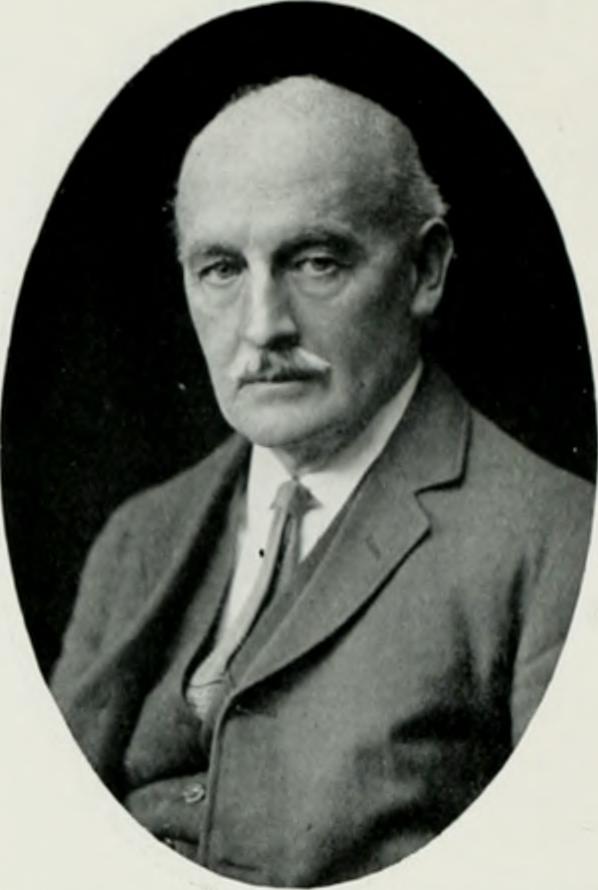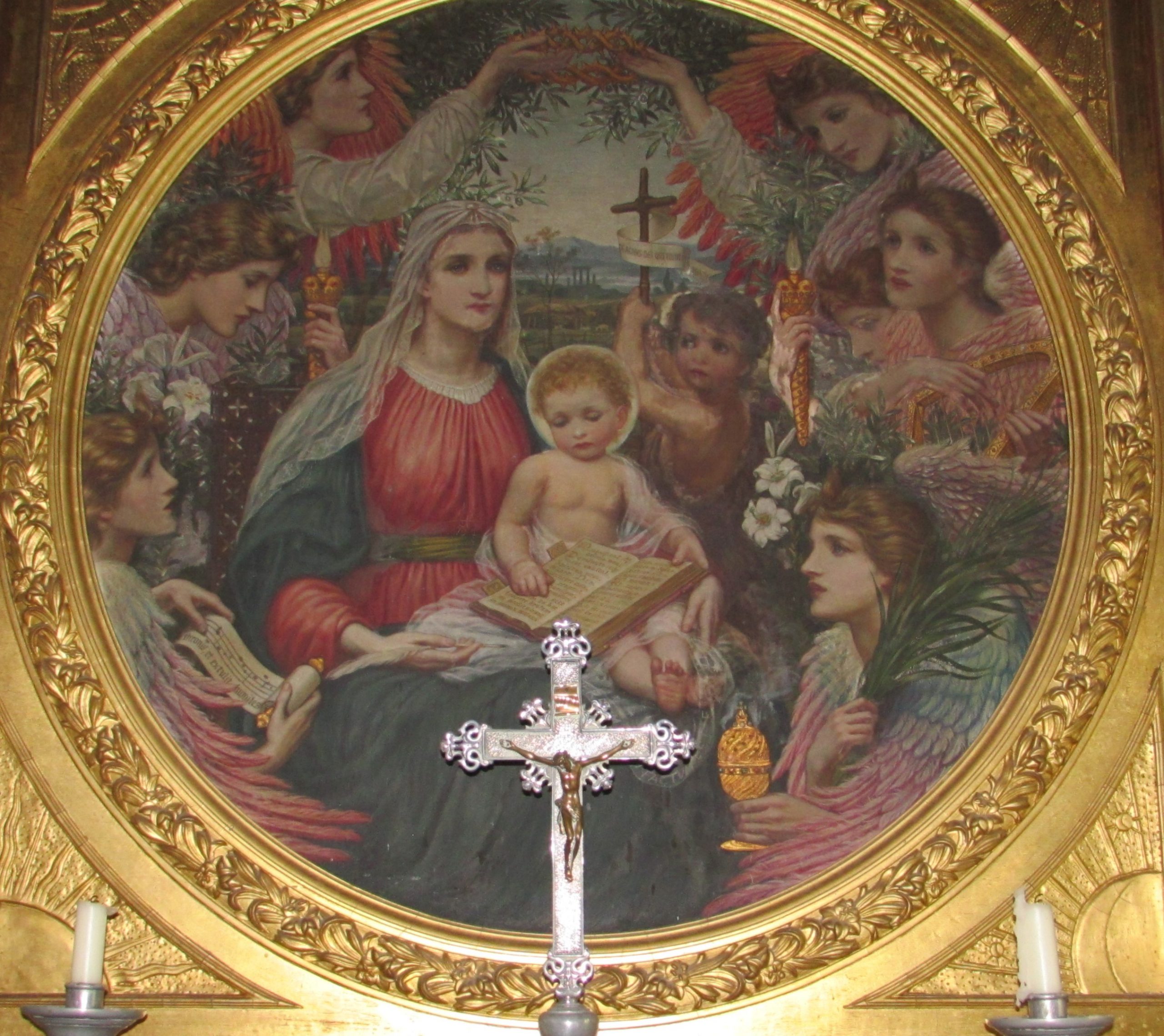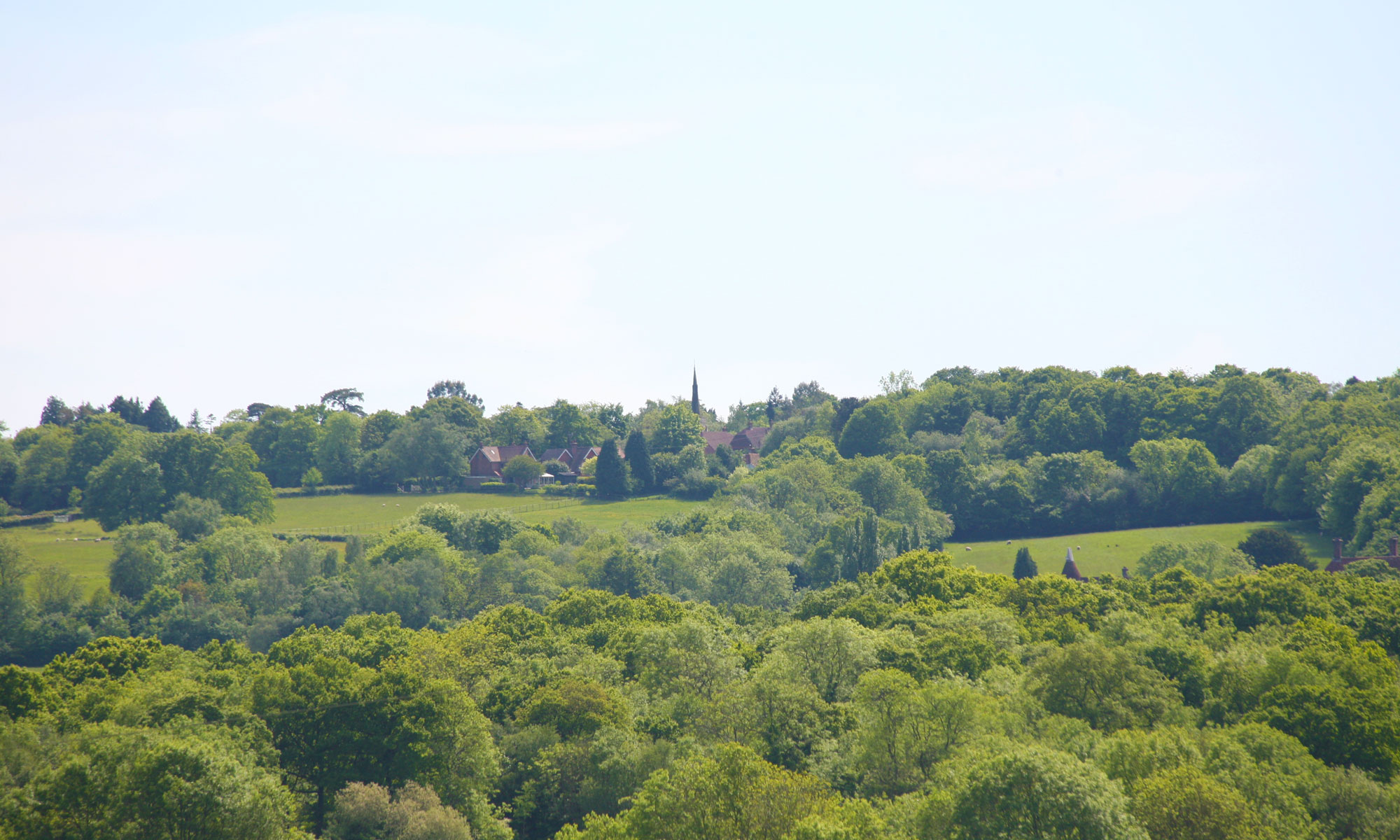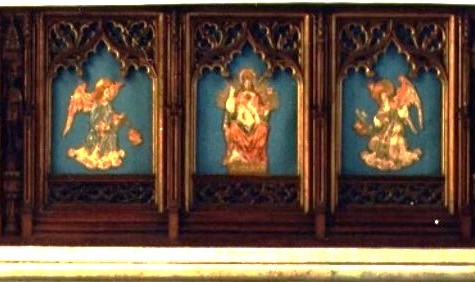 Edward Arthur Fellowes Prynne (1854–1921) was a leading British late Pre-Raphaelite painter of portraits and subject pictures, who in later life became one of the country’s best known creators of decorative art for churches. Examples of his work can be found in our own village church of St. Mark the Evangelist.
Edward Arthur Fellowes Prynne (1854–1921) was a leading British late Pre-Raphaelite painter of portraits and subject pictures, who in later life became one of the country’s best known creators of decorative art for churches. Examples of his work can be found in our own village church of St. Mark the Evangelist.
In 1913 the Hadlow Down church was in essential need of re-building, a project that was duly completed and the church subsequently re-consecrated. The re-building work had been gifted to the parish by local benefactor Mr. Charles Lang Huggins, J.P. of nearby Hadlow Grange. George Fellowes Prynne the brother of Edward Fellowes Prynne was the appointed architect of the project.
Edward Fellowes Prynne was born on the 14th October 1854 in Plymouth Devon to the Cornish Revd. George Rundle Prynne the notable tractarian and ritualist and Emily Fellowes (daughter of Admiral Sir Thomas Fellowes KCB DCL). Edward and his brother used both parent’s names in their title but did not follow the conventional practice of hyphenating them.
He was educated at Eastman’s Royal Naval Academy in Southsea, his original calling being to join the navy but at the suggestion of the popular and influential painter Frederic Leighton, he decided to embark on an artistic career. After preliminary training in art schools in London, he travelled to Antwerp, where he studied with the Belgian painter Charles Verlat. Later study was undertaken in Florence, Paris and Rome. His early paintings show a clear debt to his teacher Verlat. Soon after his return from the continent however, the artist fell under the influence of the Pre-Raphaelite school of painting, especially of Edward Burne-Jones, influencing the whole of his subsequent work.
Prynne married Emma Mary Joll in 1888, with whom he had two sons and three daughters: On moving to London in the 1880s, he lived at 8 Avonmore Road in Kensington Olympia (later home of the author Gavin Maxwell of Ring of Bright Water fame). He later moved with his family to live in Ealing and became part of the community of artists living there. He was a member of Ealing Art Group, and was present at their first meeting in 1911.
Prynne excelled across a range styles and subjects. He was a highly skilled traditional portrait artist whose works were commissioned by members of the Royal Family and politicians. He painted over 60 p.ortraits, including a life-size portrait of the Duke of Edinburgh, as Admiral of the Fleet by command of Magnificat’ set above the Lady Chapel altar
Queen Victoria and went to Osborne House on the Isle of Whight to show the portrait, which was later hung in the Royal Naval Barracks at Devonport. Prynne often painted mythological and religious pictures bordering on a psychedelic style. Notable among these were ‘Cophetua’s Queen,’ ‘Orpheus and Eurydice,’ ‘Pan and Syrinx,’ and ‘Silent Voices of the Studio’. But he is principally celebrated for his religious art, which was commissioned and bought for churches across the country. In many instances, Prynne’s painted altar and reredos panels and stained-glass grace the churches designed and restored by his brother George.
His circular ‘Magnificat’ was exhibited in the Royal Academy in 1897 and purchased by Mr Huggins and hung in the hall of Hadlow Grange before being given to the church and set in the reredos over the altar in the Lady Chapel. The central figure of the Virgin Mary holds the infant Jesus who is himself holding a book inscribed Magnificat, with the boy John the Baptist looking on. The whole is said to be a hymn of praise to the Incarnation in which Heaven and Earth join with the Virgin Mother when she sings in her heart “My soul doth magnify the Lord, and my spirit hath rejoice in God my Saviour.” There are many more interesting details in the composition, and it is worth reading the Artist’s own description of it. Prynne’s ‘Ecce Ancilla Domini,’ painted during the same year, was praised for its beauty and composition. It was displayed at the Royal Society of British Artists in 1895 and later, after the re-build, it too was presented by Mr. C. Lang Huggins to St. Mark’s.
| The three High Altar panels by Edward Fellowes Prynne |
The high altar is in a three-part format. The decoration around the three panels is typical and there is a platform and tabernacle. What is unusual about this altar is that it includes carved figures at either end, each in a niche. The panels are each occupied by a painting by Edward Prynne; the centre shows Christ in Majesty, and He is flanked by censer-waving angels. The effect is of great colour, as the light-coloured figures are set against a rich and vivid turquoise ground, setting off the detail of the figures and the carving.
The writer has observed recently that these altar panels can no longer be seen and have been replaced by fabric infills
There are many other pieces of artistic work and items in the church including the Stations of the Cross by Elsie Henderson and stained-glass windows by Percy Bacon & Francis Skeat all of which will be described in other Hadlow Down Village Trust articles and The Guide to the Church of St. Mark the Evangelist and its History.
The Kent and Sussex Courier of 24 October 1913 described the new-look church:
‘While it has been erected on the side of the old edifice it has also been enlarged, the extension taking place at the east end, where a side chapel has been provided in the south corner. The church is substantially built of stone, and its architectural features are impressive and imposing, and in their beautiful simplicity rather than their elaborate ornateness, testify to the good taste which has been shown in the choice of design. The church furniture is in agreeable harmony with the architecture, and the highly effective chancel screen is an excellent illustration of the attractive and pleasing manner in which the various parts of the edifice have been constructed and furnished. There is seating accommodation for 350 people, and chairs are provided for the congregation instead of pews. The bell which hung in the old church has been erected in the north-east corner of the church, and a new one of beautiful tone hangs in the tower above the west end entrance.’
Just before his death, Prynne was included in an Illustrated Who’s Who of Notable Londoners – one of just 22 artists, including Edwin Lutyens and Philip de László. Other Londoners featured, included Winston Churchill and David Lloyd George.
Prynne died on 28 December 1921. He was buried in the churchyard of St Mary the Virgin Church, Hayes (where his brother, George Fellowes Prynne


